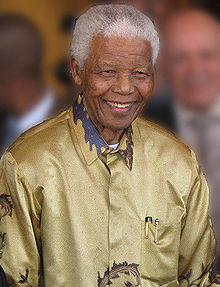Video cameras on the lookout for terrorists
Scientist Peter Tu and his team are also developing programs that can recognize faces, pinpoint distress in a crowd by honing in on erratic body movements and synthesize the views of several cameras into one bird's eye view, as part of a growing effort to thwart terrorism.
"We're definitely on the cutting edge," said Tu, 39. "If you want to reduce risk, video is the way to do it. The threat is always evolving, so our video is always evolving."
Scientists at the GE complex, a landscaped, gated campus of laboratories and offices spread out over 525 acres and home to 1,900 scientists and staff, and others in the industry hope to use various technologies to reduce false alarms, cut manpower used on mundane tasks and give first-responders better tools to assess threats. The country's growing security needs also provide an opportunity to boost business.
The United States and its allies now face a new "Iraq generation" of terrorists who have learned how to make explosive devices, assassinate leaders and carry out other mayhem since the U.S. invasion of the country more than three years ago, said Roger Cressey, a former counterterrorism official in the Bush Administration who now runs his own consulting business in Arlington, Virginia.
"These people are far more adept and capable in many respects than al-Qaeda before 9-11," he said. "They don't appear in any no-fly list or terrorism data base."
Since 2002, GE has spent $4 billion buying smaller businesses to take a bigger share of the $160 billion global security industry, a market that includes everything from building security to narcotics detection. The company expects $2 billion in revenue from its security businesses this year. That should rise to $2.8 billion in 2009, said Louis Parker, chief executive of GE's security unit.
Philadelphia-based Acoustech Corp. and Providence-Based FarSounder Inc. received Homeland Security grants to develop systems that can detect underwater threats such as divers with explosives.
"Ever since the Department of Homeland Security was put into place, our business has gone up," said James McConnell of Acoustech. The three-person company takes in $500,000 in revenue a year.
Systems currently run about $1 million from other vendors so the companies are trying to make systems that would be more affordable for port authorities and other waterfront facilities around the country such as power plants and oil refineries.
"We've had a lot of customers calling and asking for a solution to the problem," said FarSounder founder Matthew Zimmerman.
Such cost-saving measures could benefit New York City, which in June, had its share of federal anti-terrorism grants from the Department of Homeland Security cut by 40 percent to $124.5 million.
Cressey said the country has to find the best ways to protect itself and that includes investing in new technologies for things like ports, airports and mass transit systems.
The U.S. government is spending $1.1 billion this year to fund anti-terrorism technology research and has spent about $3 billion over the past three years, said Christopher Kelly, a DHS spokesman.
At General Electric, researchers are working on software that allows cameras to separately track people and the items they are carrying to help detect when suspicious packages are left in airports, stadiums and other public places.
One such system is already being tested using video from London's Victoria train station, part of the transit system hit by suicide bombers in July 2005 in which 52 people were killed and another 740 wounded.
Cressey said there are about 30 million video surveillance cameras in the United States shooting about four billion hours of footage every week. Relying more on computers to go through that footage would allow manpower to be better used elsewhere and perhaps lead to faster recognition of possible threats.
Among numerous other projects, GE is working on baggage scanners that use advanced X-ray and CT technologies to detect traces of explosives faster and with greater accuracy and shoe scanners that use quadrupole resonance, similar to magnetic resonance imaging, to improve screening of passengers' shoes while they are still on their feet.
Still, many officials warn that technology cannot replace humans entirely.
"You can't get too reliant on these things," said state Sen. Michael Balboni, a Long Island Republican and chairman of the Senate's committee that oversees homeland security issues. "If someone finds a way to bypass them, they can use the technology against us. You have to expect that enemies will find ways to get around it."
sfux - 11. Aug, 08:00 Article 2384x read
















































